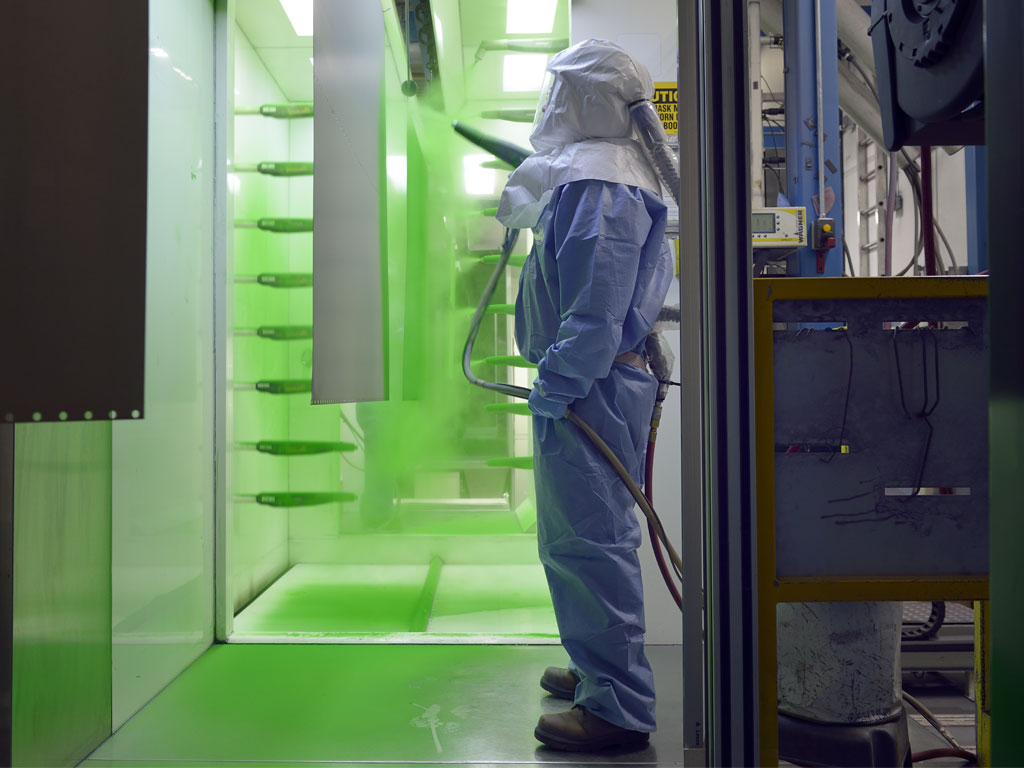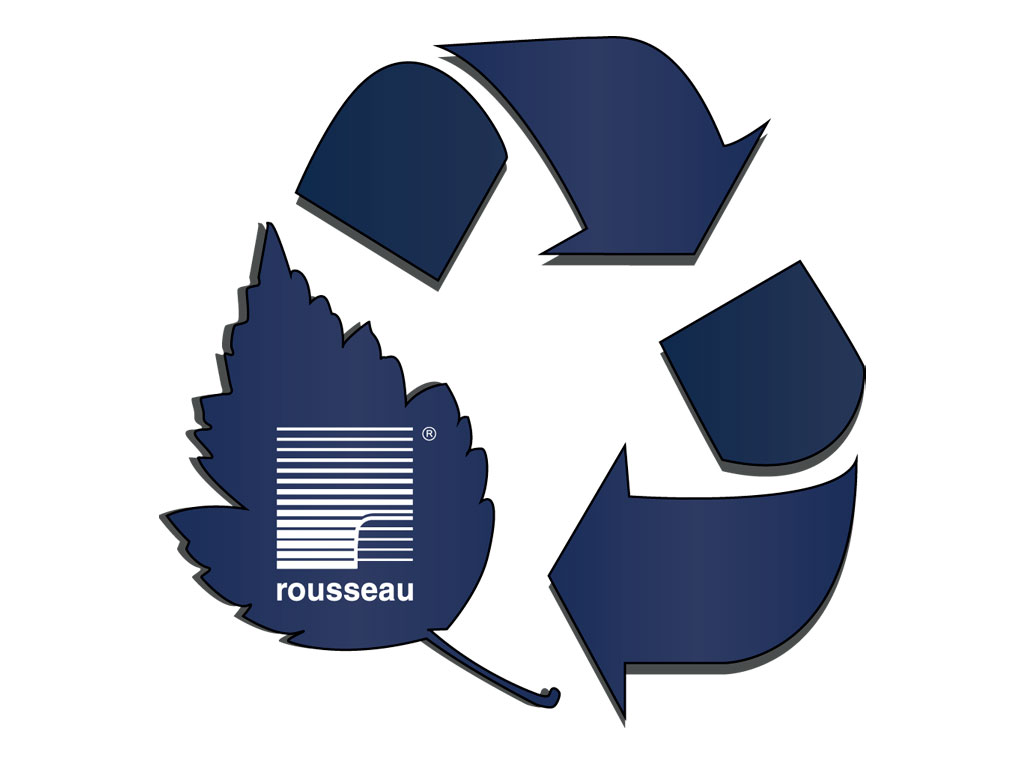We use cookies to offer you a better website experience. To comply with the new e-Privacy directive, we need to ask for your consent to set the cookies. Learn more.
- General
- Automotive
- Auction
- Contest
- e-rousseau
- 1.866.463.4270
- [email protected]

Rousseau's commitment to the environment
As part of its commitment to sustainable development, Rousseau constantly strives to improve its manufacturing processes so they can be as environmentally friendly as possible. Here are some of the initiatives taken in recent years.
For several years now, Rousseau has been using powder paint instead of liquid paint for all products manufactured. This significantly reduces emissions of CO2 and eliminates several tons of hazardous materials. It is now the only type of paint used in the plant.
Our ventilation systems have gradually been updated with automated controllers that reduce the amount of fresh air and heating needed.
The plant has also reduced its water consumption by 90% thanks to an ingenious water cooling system. Rousseau is confirming its status as an industry leader by implementing these environmentally conscious initiatives.

Rousseau and LEED®
LEED® (Leadership in Energy and Environmental Design) is an international green standard of certification created in 1998 by the USGBC (U.S. Green Building Council). Projects can obtain LEED® certification through a points-based system, which means the certified building or project excels in environmental compliance.
Rousseau can help customers obtain this certification because its environmentally-friendly processes can contribute toward earning LEED® points.
Rousseau products contribute to the following LEED criteria
| Sustainable Sites Category | |||
|---|---|---|---|
| Credits | Points | Requirements | Rousseau Contribution |
| 5.2 Reduced Site Disturbance: Development footprint | 1 | Reduce the development footprint (defined as entire building footprint, access roads and parking) to exceed the local zoning’s open space requirement for the site by 25%. | Whether using our drawers in shelving, modular cabinets, two-tier shelving system or any other Rousseau product, our specialists will help you find the best solution to minimize the space occupied on the ground, and thus optimize the footprint of your project. Rousseau products are designed for storing a large amount of items in a limited space. |
| Materials & Resources Category | |||
| Credits | Points | Requirements | Rousseau Contribution |
| 2.1 Construction Waste Management: Divert 50% from landfill | 1 | Develop and implement a waste management plan, quantifying material diversion goals. Recycle or recover at least 50% or 75% of waste from construction, demolition and clearing of the land. | Rousseau uses recyclable materials for its product packaging, such as cardboard, plastic, wood and paper. |
| 2.2 Construction Waste Management: Divert 75% From Disposal | 1 in addition to 2.1 | ||
| 3.1 Resource Reuse: 5% | 1 | Use salvaged, refurbished or reused materials, products and furnishings for at least 5% or 10% of the total cost of building materials. | As Rousseau products are versatile and durable, they can contribute to obtaining points if they are salvaged, refurbished or reused. |
| 3.2 Resource Reuse: 10% | 1 in addition to 3.1 | ||
| 4.1 Recycled Content: 7.5% CAN and 10% USA | 1 | Use materials with recycled content such that the sum of post-consumer recycled content plus one-half of the post-industrial content constitutes at least 7.5% CAN and 10% USA or 15% CAN and 20% USA of the total value of the materials in the project. | The total recycled content of the steel used for our products is 58%. This includes post consumer content of 20%, the pre-consumer or post consumer sum of 25% and the balance corresponding to the internal scrap of our supplier. |
| 4.2 Recycled Content: 15% CAN and 20% USA | 1 in addition to 4.1 | ||
| 5.1 Regional Materials: 10% | 1 | Use a minimum of 10% or 20% of building materials or products for which at least 80% of the mass is extracted, processed, and manufactured within 800 km (500 miles) of the project site or 2400 km (1, 500 miles) of the project site and shipped by rail or water. | All of the products that we manufacture are manufactured at our plant in St-Jean-Port-Joli in Québec, Canada. The regions of extraction and processing of the steel used for our products are in different regions located in Canada and the United States. The regions for products that are not composed of steel and those that we purchase and re-sell can vary and will be supplied accordingly. |
| 5.2 Regional Materials: 20% | 1 in addition to 5.1 | ||
| Indoor Environmental Quality Category | |||
| Credits | Points | Requirements | Rousseau Contribution |
| 4.2 Low-Emitting Materials: Paints and coatings | 1 | VOC emissions from paints must not exceed the VOC and chemical component limits of Green Seal’s GS-11 Standard requirements. | All our paints are cooked at high temperature in an industrial convection oven. For powder coatings, this means it completely eliminates VOC emissions. For our liquid paints, it retains only a small part, which disappears with time. |
| 4.4 Low-Emitting Materials: Composite wood and laminate adhesive | 1 | Composite wood and agrifiber products, including core materials, must contain no added urea-formaldehyde resins. Adhesives used to fabricate laminated assemblies containing these products must contain no urea-formaldehyde. | Our wood composite and laminated wood tops are available without urea formaldehyde resins upon request. |

